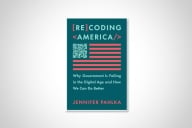You have /5 articles left.
Sign up for a free account or log in.
1989 was a more innocent time. The Pixies and The Replacements dominated college radio. Communism fell, thereby ending history. (Anyone remember the end of history? Good times, good times...) The Simpsons premiered, at the last possible moment that a Homer Simpson could afford a two-story colonial. And an entire generation of college students was told, as this Chronicle piece from 1989 shows -- and hat-tip to William Pannapacker for finding it - that the next few decades promised a rosy job market for liberal arts doctorates.
The article is behind a paywall, apparently, so I’ll convey some of the highlights:
--The arts and sciences face severe faculty shortages in the future, especially in the humanities and social sciences, a new study has found.
--However, the study -- which makes projections to the year 2012 --
--[William Bowen, the author of the study] also noted the study's finding that while particular institutions, fields, or departments might feel the effects of the anticipated end to mandatory retirement, no overall significant quantitative effect is expected.
--"People will always retire," he said. "There just may be a little lag time, that's all."
I swear, I am not making this up. In fact, I remember it well. It the the Fall of my senior year of college, and this information -- widely shared at the time -- influenced my decision to go to graduate school. From what we were told, it seemed like a good economic move.
This is why I remain wary of long-term occupational projections.
Over the past week or so, I’ve seen a host of stories about how the end of mandatory retirement from tenured positions greatly slowed the pace of faculty retirements, thereby jamming the pipeline for the next generation. Scott Jaschik’s story “They Aren’t Retiring” sets the table nicely, and works as a counterpoint to “a little lag time.” Yesterday’s piece about a professor at Penn State getting his “fat Boomer butt out of the way” set off a firestorm of comments. And not to be outdone, Mark Bauerlein opined in Bloomberg that “Old Professors Never Quit, They Just Hang Around.” Although the “fat Boomer butt” line was a contender for Best Quote, I have to give the Best Quote award to Mark Taylor, cited by Bauerlein, for the instant classic “[t]enure decisions render illiquid a significant percentage of endowments at the precise moment when more flexibility is required.”
“Render illiquid.” It’s not quite “the best that has been thought and said,” but it fits the times.
Issues of intergenerational justice get precious little airtime in higher ed, mostly because the rhetorical pitchforks and torches come out whenever someone brings them up. But they matter.
The classic 1940 AAUP statement on tenure approvingly mentioned a “normal retirement age,” though the folks who like to cite that statement tend not to mention that part. In the gap between 1987, when the Supreme Court put mandatory retirement on notice, and 1994, when it dealt the final blow, statements like Bowen’s were legion. Then the age cap went away, incumbents got a windfall, and the pattern of the industry eating its young got worse.
By 1997, when I emerged with my doctorate, the market for young academics in the humanities and social sciences was a bad joke. And those who did manage to find full-time jobs often found themselves paying much higher percentages of their salaries towards retirement plans and health insurance than their more senior predecessors, thanks to the perverse miracle of “tiered” contracts and benefits. Unsustainably generous benefits for early arrivals were paid for by beating up on the newcomers, whether through tiered benefits for full-timers, or none at all for part-timers, whose ranks swelled. This pattern holds across many industries, and is typically a sign of crisis. It is not how healthy industries behave.
It would be misleading and unhelpful to suggest that the end of mandatory retirement was the primary driver behind the catastrophic reversal of the trends Bowen foresaw. But it would be naive to pretend that it didn’t make a bad situation worse. It wasn’t primary, but it contributed, and it still does.
What makes the issue as frustrating as it is -- other than the ritualistic and blistering personal attacks -- is that it’s almost never discussed honestly. Legislating safety for one group doesn’t make systemic risk go away. It just redistributes it to other groups. When an entire industry is facing increasing risk, those other groups get it with both barrels. That’s not an implementation error; it’s a given. But the issue is rarely, if ever, discussed that way.
None of this presumes any judgment about any individual’s performance. I assume that the performance of people in any given age group varies widely. That’s not the point. The point is that a fundamental change to a basic tenet of the industry was promulgated without honest discussion, in an environment in which serious, respected people got the economics catastrophically wrong. And even now, decades later, it’s still considered shocking when someone brings it up.
In 1989, it was still possible for thoughtful and intelligent people of goodwill to believe that we were on the cusp of a glorious future, in which none of these issues would matter, young graduates would be in high demand, and history would be reduced to a scrolling catalog of peace and prosperity. But we know better now. It’s time for a more honest conversation, in which we start with the premise that no employment policy can eliminate risk. A little more epistemological humility about the future, and a little less hubris about the power of policy, could go a long way.



